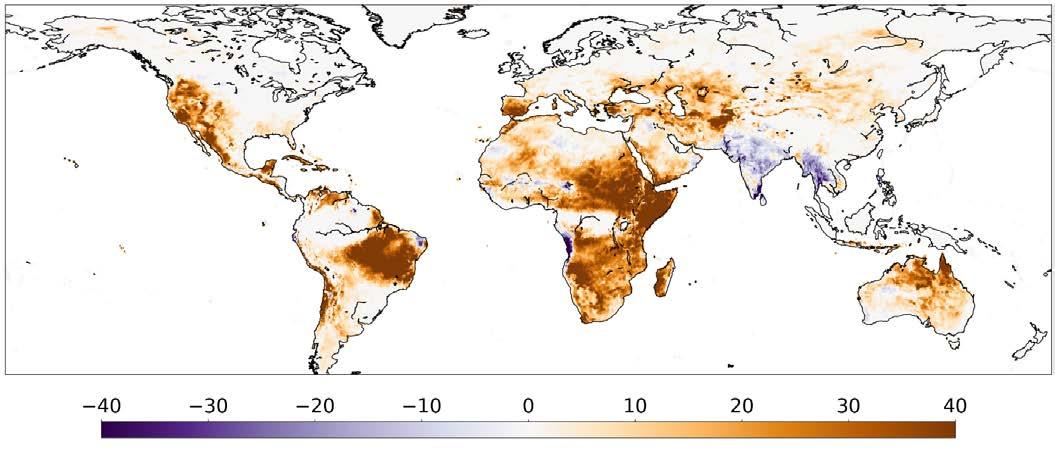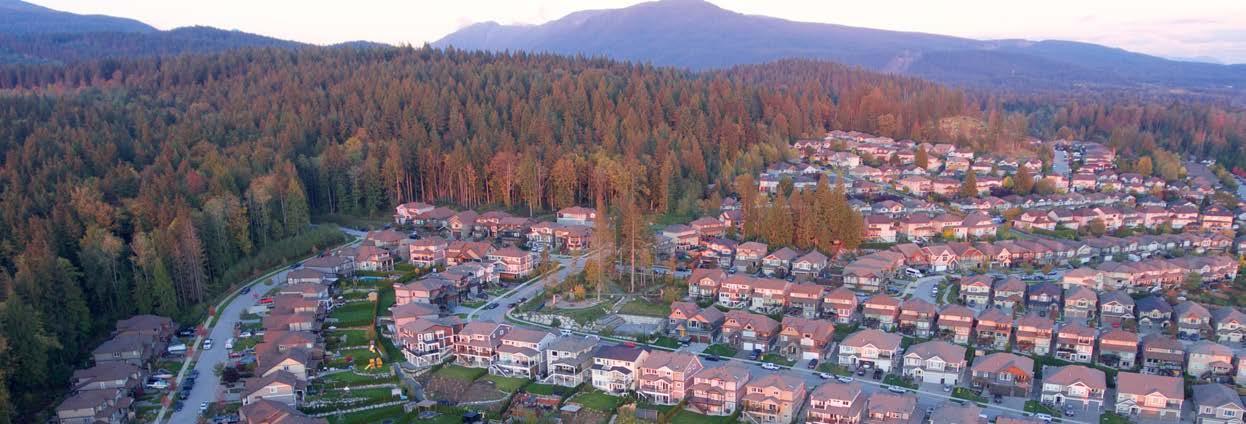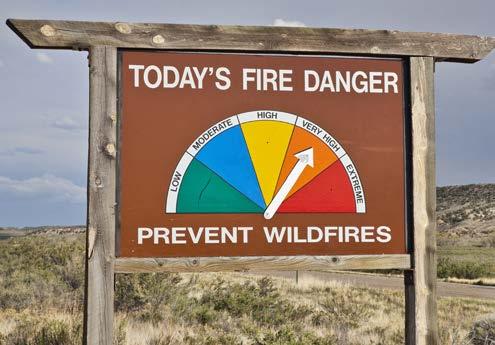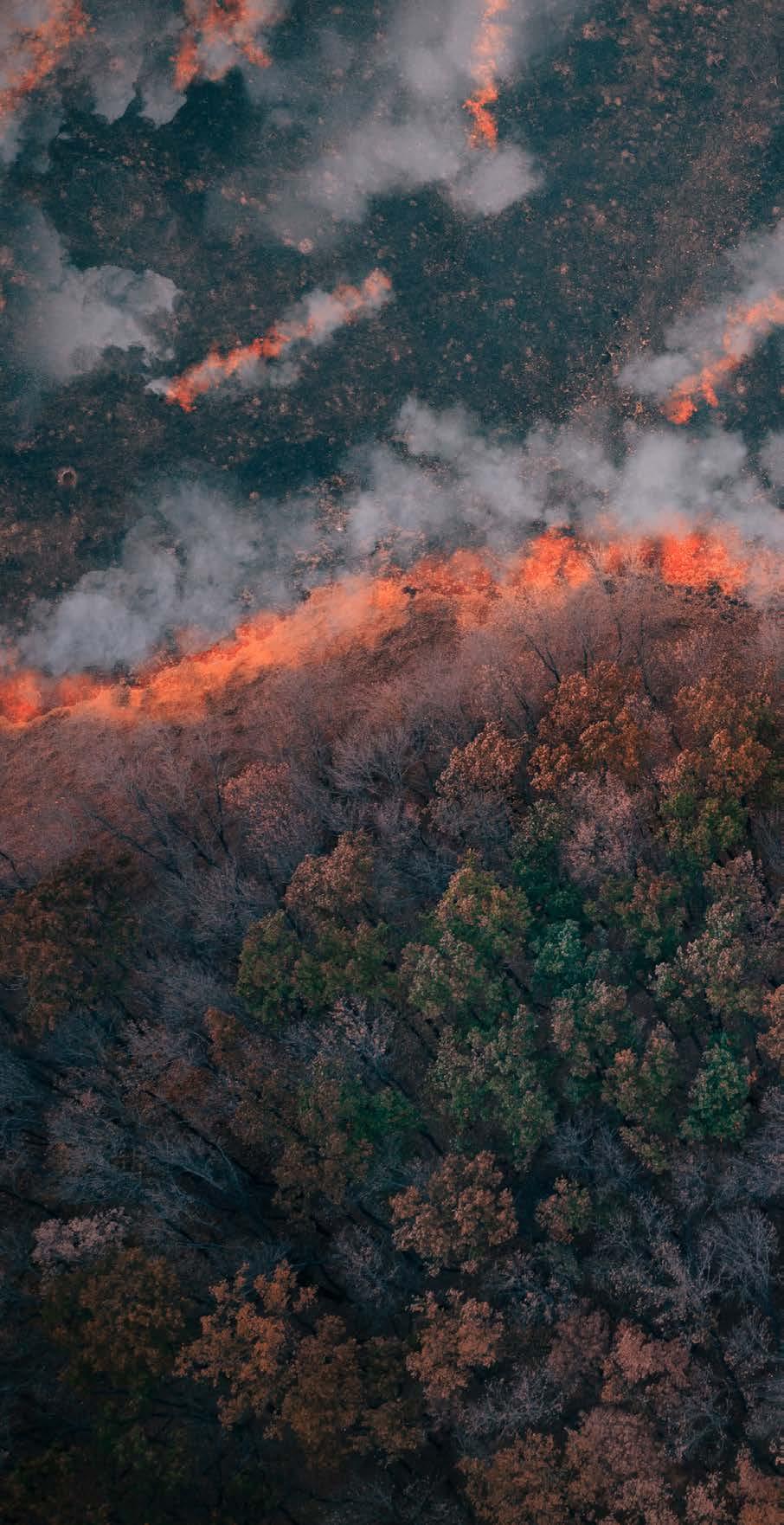Taming Wildfires in the Context of Climate Change




Extreme wildfires have repeatedly made headlines in recent years. Fuelled by increasing temperatures, changing precipitation patterns and extended drought periods, extreme wildfires are affecting more and more local communities and regional economies and threatening vulnerable ecosystems across the globe. The 2019-20 wildfires wreaked havoc in Australia, with environmental damages that may well last for decades. The 2018 Camp Fire became the deadliest in California’s history and caused economic costs amounting to USD 19 billion, without taking into account the indirect impacts. The consequences also go beyond affected countries’ borders. Extreme wildfires in the Amazon region, such as those experienced in 2016, may trigger critical tipping points. These could result in abrupt shifts in vegetation cover, which in turn affect global carbon cycles.
As little as a decade ago, there was no way to confirm a clear link between the occurrence of extreme wildfires and climate change, but this has rapidly changed. We now know that climate change alters fire weather and fuel conditions, resulting in a growing number of extreme wildfires. Attribution science has demonstrated that the impacts of the 2017 wildfires in Canada, the 2018 Camp Fire in California and the 2019-20 wildfires in Australia were much greater with climate change than would have been the case otherwise. In the last 30 years, climate change is estimated to have doubled the total forest area burned in the western United States compared to a counterfactual without climate change. Given that further warming is already locked in, this trend will not be reversed anytime soon.
The twin challenges of mitigating climate change and adapting to increasingly extreme wildfires must be tackled together. Managing land and ecosystems sustainably and limiting land development that encroaches on highly exposed wildland areas are key to reducing the impacts of wildfires.

This report, Taming Wildfires in the Context of Climate Change, provides a comprehensive global assessment of climate change’s consequences for the growing extreme wildfire risk. It discusses the environmental, social and economic impacts of extreme wildfires and presents emerging country approaches to adapt policies and practices to deal with the growing wildfire risk. As extreme wildfires have demonstrated the limits of wildfire suppression efforts, there is growing recognition of the need to refocus policy efforts on climate change adaptation. Containing future wildfire losses and damages will require integrating preventative actions through a whole-of-government effort. This report provides OECD insights for policy makers and practitioners to help make that happen.
Jo Tyndall Environment Director, OECDThe frequency and severity of wildfires, as well as the duration of the fire season, are increasing in many regions of the world. The occurrence of extreme wildfires, which are wildfire events that are particularly severe in terms of their size, duration, intensity, and impacts, is also on the rise. In Australia, the average wildfire frequency has doubled since 1980. In the forests of the western United States, wildfire severity, which is the degree of ecosystem impacts caused by a wildfire, increased eight-fold between 1985 and 2017. Globally, the duration of the annual fire weather season has increased by 27% since 1979.
While in some areas wildfires provide important ecological functions that maintain ecosystem health and functioning, extreme wildfires threaten the natural balance of ecosystems and can tip them towards irreversible changes. Altogether, extreme wildfires can cause significant impacts on human lives and wellbeing, on ecosystems and the climate system, as well as on the economy.

Globally, wildfire-induced air pollution is associated with 340 000 premature deaths annually. Extreme wildfires can cause long-lasting and potentially irreversible ecosystem damage as observed during the 2017 wildfires in Chile, where nearly 40% of critically endangered habitats were damaged. The economic impacts of extreme wildfires are also mounting to unprecedented levels. The 2019-2020 wildfires in Australia caused USD 23 billion in direct economic damages - the costliest in the country’s history.

Unsustainable land use practices and environmental degradation have affected the resilience of ecosystems to wildfires:
• The drainage of peatlands worsens drought conditions and increases landscape flammability. This has contributed, for example, to the severity of the 2015 wildfires in Indonesia.
• Deforestation in Amazonia’s rainforests has contributed to the growing occurrence of extreme wildfires, as permanent forest loss worsens drought conditions and makes ecosystems less resilient to fire.

• Certain agricultural and forestry practices also increase wildfire risk, as observed in Chile, where plantations of non-native species fuelled the extreme 2017 wildfires.
• In most cases, human activity (accidental or due to arson) is the main cause of wildfire ignition, accounting for nearly 70% of the total burned area globally.
Rural land abandonment is also a major driver of wildfire risk. Rural populations have traditionally played a key role in reducing wildfire risk, contributing to limiting vegetation accumulation, for example through grazing, as well as by creating “mosaics” of agricultural fields that act as wildfire breaks. When rural land is abandoned, fewer people are on the ground to manage fuel and respond to wildfires early on. These trends are particularly marked in Mediterranean countries. For example, Portugal’s rural population has decreased by 30% since 1960.
In other areas, the wildland-urban interface (WUI) is growing rapidly, exposing people and assets to significant wildfire risk:
• In the United States, between 1990 and 2010, the WUI area grew by 33%, while the number of houses increased by 40%, contributing to the devastating wildfire impacts observed in recent years.
• In Greece, the substantial WUI expansion around the city of Athens is likely to have contributed to the devastating impacts of the Attica wildfires in 2018.


Higher atmospheric temperatures, altered precipitation patterns, dryness of the landscape, and changing wind and lightning patterns have increased the risk of wildfires:
• Droughts were found to drive the intensity of the 2017 wildfires in Chile and Portugal, the 2018 Camp Fire in the United States, and the 2020 wildfires in Arctic Siberia, Russian Federation (hereafter “Russia”)
• Exceptionally high atmospheric temperatures were associated with the occurrence of the 2019 Arctic wildfires in Canada and the 2018 wildfires in Australia.
• The 2019-2020 wildfires in Australia were found to be at least 30% more likely due to climate change.
Stronger winds
Earlier snowmelt
Altered incidence of lightning
Proliferation of invasive species
Dry fuel, accelerate fire spread, facilitate ignition (through embers)
Dry fuel, make the fire season longer
Alter ignition patterns
Facilitate fuel accumulation and continuity
Climate change is estimated to have doubled the total forest area burned in the western United States between 1984 and 2015.
Extreme wildfires can alter the Earth’s carbon cycle, emitting more carbon than is sequestered by regrowing vegetation. Carbon dioxide (CO2) emissions from extreme wildfires amount to an average 8 billion tonnes every year. At the same time, by burning vegetation and soil, extreme wildfires in forests and peatlands reduce land carbon storage capacity, further hampering climate mitigation efforts. Thereby, wildfires exacerbate climate change, which in turn increases the frequency, size, and severity of wildfire events.

Climate change increases the risk of wildfire frequency, intensity and extremes
GHG emissions from wildfires fuel climate change
Extreme wildfire events increase GHG emissions


The frequency and severity of extreme wildfires are set to increase in the future due to climate change
Rising temperatures and drought conditions, coupled with changing precipitation and wind patterns, are likely to make extreme fire weather more frequent and to extend the duration of the wildfire season (i.e. the period when weather conditions are conducive to the occurrence of wildfires) in many regions of the world. In the western United States, extreme fire weather is projected to more than double under a +3.0°C warming scenario, compared to pre-industrial levels. Globally, under a 4ºC warming scenario, wildfire frequency is projected to increase by 30% by 2100.

Change in the number of fire weather days compared to the period 1860-1920
Note: Projected changes are provided under different degrees of atmospheric warming (+1.5°C,
Source: Based on data from the National Interagency Fire Center.
Globally, area burned is projected to increase by 19% by 2050 compared to 2000, under a moderate-emission scenario.Figure 4. PROJECTED CHANGE IN THE DURATION OF THE FIRE WEATHER SEASON UNDER CLIMATE CHANGE
In response to extreme wildfires, affected countries have scaled up their emergency preparedness and response capacities. For example, the United States increased federal funding for wildfire suppression almost four-fold, while in the European Union (EU) the Civil Protection Mechanism enhanced crossborder cooperation on firefighting. Weather and fire monitoring systems have also been strengthened in several regions, including through the European Forest Fire Information System (EFFIS) and EU Copernicus programme and The North American Space Agency (NASA).
Despite these significant efforts, increasingly extreme wildfires have shown the limits of suppression in containing wildfire damage:
• Some extreme wildfires can take months to suppress, straining firefighting resources and limiting their effectiveness to contain wildfire impacts. This was observed during the extreme 2009 Black Saturday wildfires in Australia, which took over one month of firefighting efforts to be suppressed.
• The outbreak of several simultaneous fires creates bottlenecks in the deployment of firefighting resources, as observed during the 2018 wildfire season in Greece, where over 100 people lost their lives.

Extreme wildfires have shown the limits of suppression in containing damage, highlighting the need for better prevention.
Fuel loads need to be better monitored and managed, ecosystems need to be protected from degradation, and planted forest species need to be adapted to changing fire conditions. Land use and building decisions need to better account for existing and projected wildfire hazard and risk assessment and awareness need to be scaled up. Finally, a strong enabling environment is needed to enable changes to existing practices.

The protection and restoration of degraded ecosystems such as forests and peatlands is a key element in many countries’ wildfire risk prevention efforts, including in Costa Rica, Indonesia, South Africa, and the United States. Portugal has also strengthened the adaptive management of forests, promoting the plantation of native fire-adapted species to reduce landscape flammability. Further efforts are needed to curb illegal and unsustainable land use, including by scaling up monitoring and enforcement efforts.


Managing vegetation accumulation in the wildland-urban interface is critical to reduce wildfire impacts, as it reduces the amount of fuel available to burn. Fuel accumulation can be managed using prescribed fires and creating buffer zones and fuel breaks:


• Prescribed fires are commonly used in Australia, Canada and the United States, while in Europe their use remains restricted (e.g. in Portugal and France) or completely forbidden.
• Fuel breaks and buffer zones are increasingly mandated in many countries, including in Australia, Greece, Portugal and the United States. In Portugal, buffer zones are mandatory for both new and existing buildings in WUI areas. In California, after the extreme 2018 Camp Fire, the municipality of Paradise bought some of the private lands most affected by the blaze to turn them into non-flammable fuel breaks.
• In Australia, reinforcing the traditional use of fire in agricultural and land management practices in collaboration with indigenous communities led to a 50% reduction in area burned between 2000-2006 and 2013-2019.
Governments increasingly appreciate the importance of private stakeholder engagement in fuel management. In France, Israel, Portugal, and Spain, incentives are provided to encourage grazing activities on fuel-rich land to reduce fuel accumulation. However, low monitoring and enforcement and incomplete land registries can limit the effectiveness of these measures.
Land use and building regulations are key to protect lives and economic assets. For example, in Portugal and France, the construction of new buildings is generally forbidden in zones characterised by “high” or “very high” wildfire risk. Countries have also developed stricter standards for building design and maintenance in high-risk areas. Greece and Portugal mandate the use of non-flammable materials and structural protection measures for new buildings and requirements on retrofitting existing ones in high-risk areas. To inform these decisions, wildfire hazard models need to be integrated in land use planning processes.
The socio-economic impacts that resulted from recent extreme wildfires revealed gaps in planning, monitoring and enforcement, highlighting the need to strengthen zoning regulations, as well as their enforcement, throughout the territory.


It is essential to adapt land-use planning and the built environment to growing wildfire risk
Strengthening infrastructure resilience is also critical. This includes the effectively planning and managing infrastructure to reduce the risk of wildfire ignition, as well as designing infrastructure assets and networks that are themselves resilient to wildfire risk, by ensuring that the continuity of their services and operations even in the occurrence of a wildfire event. Countries have started to develop regulations to require infrastructure owners and operators to abide to fire safety rules and develop contingency plans. Following the extreme 2009 Black Saturday wildfires in Australia, the State of Victoria established an AUD 750-million Powerline Bushfire Safety Program, which by upgrading the electricity distribution network and regulating infrastructure successfully reduced wildfire risk from powerline ignition. However, wildfire regulations often lag behind and measures taken by infrastructure stakeholders remain voluntary.

To effectively inform wildfire risk management efforts, better wildfire risk assessments are needed. Upto-date, downscaled information on wildfire hazard, exposure and vulnerability and the integration of climate change impact models help to better assess future wildfire risk, while also effectively inform wildfire risk prevention and preparedness decisions.

A whole-of-government effort is critical to enhance wildfire risk prevention. Forest and land managers, critical infrastructure operators, spatial planning agencies, meteorological services, agriculture ministries, civil protection agencies, local governments and private property owners all have a critical contribution to make in preventing wildfires. Co-ordination, collaboration and knowledge exchange across sectors and levels of government need to be strengthened. Initiatives to create central co-ordinating bodies, such as the Agency for Integrated Rural Fire Management in Portugal, can be effective governance arrangements. Developing national wildfire management strategies that provide an overarching policy framework guiding the work of all relevant agencies is also effective, as observed for example in Australia and the United States, to date the effective integration of wildfire prevention into sectoral policies remains the exception, rather than the norm.


Sufficient and stable public funding for wildfire prevention must be ensured. While a strong recognition of the need to invest in wildfire risk prevention can be observed across countries, the increase in funding to date has mostly benefitted emergency preparedness and response, with wildfire suppression spending in many countries being up to six times higher than risk prevention investments. In many countries, funds initially earmarked for wildfire prevention get diverted to fund emergency response, further exacerbating prevention funding gaps. Yet, in some countries, extreme wildfires have triggered a shift in resource allocation.
Insurance coverage for wildfire risk can play a key role in scaling up wildfire risk reduction by identifying areas at risk and incentivising private investments in risk reduction measures. Insurance premiums can be made to reflect the level of exposure and vulnerability of insured assets. For example, lower insurance premiums can be offered to policy holders whose assets are in line with wildfire building standards. In the United States, some insurance companies give a 5% discount on insurance premiums to homeowners that undertake certain wildfire prevention measures. In the absence of insurance coverage for wildfire risk, governments often step in to compensate for privately incurred losses and damages. Catastrophe risk insurance programmes, such as France’s CatNat system, can be a way to keep insurance premiums affordable, while backing up insurance providers through a state guarantee in case of an extreme event.
Strengthen ecosystem protection and adaptive management for wildfire prevention
• Protect and restore wildland ecosystems from degradation, illegal activity and land-use change
• Manage forests to adapt their structure and composition to changing wildfire risk
Scale up fuel management efforts to reduce fuel accumulation and continuity
• Mandate the use and maintenance of buffer zones to protect assets in wildlife-urban interface (WUI)
• Develop fuel break systems and landscape mosaic areas to reduce landscape flammability
• Enable the active use of fire for fuel management under safe conditions
Strengthen land-use planning and building regulations for wildfire prevention
• Regulate development in fire-prone areas via zoning regulations
• Develop building codes and standards that mandate fireproof building design
• Regulate infrastructure planning, design and operations to reduce wildfire risk
• Ensure compliance with land-use planning and building regulations
Harness knowledge for better wildfire management and improve wildfire risk assessments
• Integrate information on wildfire hazard, exposure and vulnerability
• Integrate climate models into wildfire hazard assessments
• Develop wildfire projections that integrate estimations on future climate and socio-economic changes
Strengthen the policy and institutional framework
• Promote a whole-of-government approach to wildfire management, including through national wildfire risk management strategies and central co-ordinating agencies
• Integrate wildfire risk prevention across all relevant sectors, ensuring policy coherence and alignment
• Ensure the engagement of all relevant government and non-governmental stakeholders
• Strengthen co-ordination, collaboration and knowledge exchange across sectors and levels of government
Scale up funding and risk transfer instruments for wildfire risk reduction
• Ensure sufficient and stable public funding for wildfire prevention and encourage private investment through incentives and subsidies
• Ensure the availability, affordability and uptake of insurance coverage for wildfire risk
Please refer to the OECD report Taming Wildfires in the Context of Climate Change for the full list of references.
Caohuu, D. et al. (2015), Fueling Resilience: Climate and Wildfire Risk in the United States, Swiss Reinsurance Company Ltd, Zurich, https://www.swissre.com/dam/jcr:c2345219-8148-49e6-99dd-c9be9f505301/pub_ Fueling_resilience.pdf.
European Commission (2018), Forest Fires – Sparking Firesmart Policies in the EU, European Commission, Brussels, https://op.europa.eu/en/publication-detail/-/publication/0b74e77d-f389-11e8-998201aa75ed71a1/language-en.
IPCC (2022), Climate Change 2022: Impacts, Adaptation and Vulnerability – Summary for Policymakers, Intergovernmental Panel on Climate Change, https://www.ipcc.ch/report/ar6/wg2/downloads/report/IPCC_ AR6_WGII_FinalDraft_FullReport.pdf.
Jones, M. et al. (2022), “Global and regional trends and drivers of fire under climate change”, Reviews of Geophysics, Vol. 60/3, https://doi.org/10.1029/2020RG000726.
Marsh & McLennan Companies (2019), The Burning Issue: Managing Wildfire Risk, Marsh & McLennan Companies, https://www.marshmclennan.com/content/dam/mmc-web/insights/publications/2019/oct/ THE%20BURNING%20ISSUE%20-%20MANAGING%20WILDFIRE%20RISK__screen_final.pdf.
OECD (forthcoming), “Taming wildfires in the context of climate change: The case of Australia”, OECD Environment Policy Papers, OECD Publishing, Paris, forthcoming.
OECD (forthcoming), “Taming wildfires in the context of climate change: The case of Greece”, OECD Environment Policy Papers, OECD Publishing, Paris, forthcoming.
OECD (forthcoming), “Taming wildfires in the context of climate change: The case of Portugal”, OECD Environment Policy Papers, OECD Publishing, Paris, forthcoming.
OECD (forthcoming), “Taming wildfires in the context of climate change: The case of the United States”, OECD Environment Policy Papers, OECD Publishing, Paris, forthcoming.
UNEP (2022), Spreading like Wildfire – The Rising Threat of Extraordinary Landscape Fires, A UNEP Rapid Response Assessment, United Nations Environment Programme, Nairobi, https://www.unep.org/resources/ report/spreading-wildfire-rising-threat-extraordinary-landscape-fires.

WWF (2020), Fires, Forests and the Future: A Crisis Raging Out of Control?, World Wildlife Fund, Gland, Switzerland, https://wwf.panda.org/wwf_news/?661151/fires2020report.
Xu, R. et al. (2020), “Wildfires, global climate change, and human health”, New England Journal of Medicine, Vol. 383/22, pp. 2173-2181, https://doi.org/10.1056/NEJMsr2028985.
This Policy Highlights brochure is based on the OECD publication
Taming Wildfires in the Context of Climate Change


This report provides a global assessment and outlook on wildfire risk in the context of climate change. It discusses the drivers behind the growing incidence of extreme wildfires and the attribution effect of climate change. It outlines the environmental, social and economic impacts of wildfires by illustrating the losses and costs observed during recent extreme wildfire events. Building on this, the report presents the findings of a cross-country comparative analysis of how countries’ policies and practices have evolved in recent years in light of observed and projected changes in wildfire risk. The analysis draws on in-depth case studies conducted in Australia, Costa Rica, Greece, Portugal and the United States. The report underlines the urgent need for governments to scale up climate change adaptation efforts to limit future wildfire costs.
For more information: OECD (2023), Taming Wildfires in the Context of Climate Change, OECD Publishing, Paris, https://doi.org/10.1787/dd00c367-en
oe.cd/cc-wildfires
oecd.adaptation@oecd.org

@OECD_ENV
OECD Environment
OECD Environment Directorate, May 2023